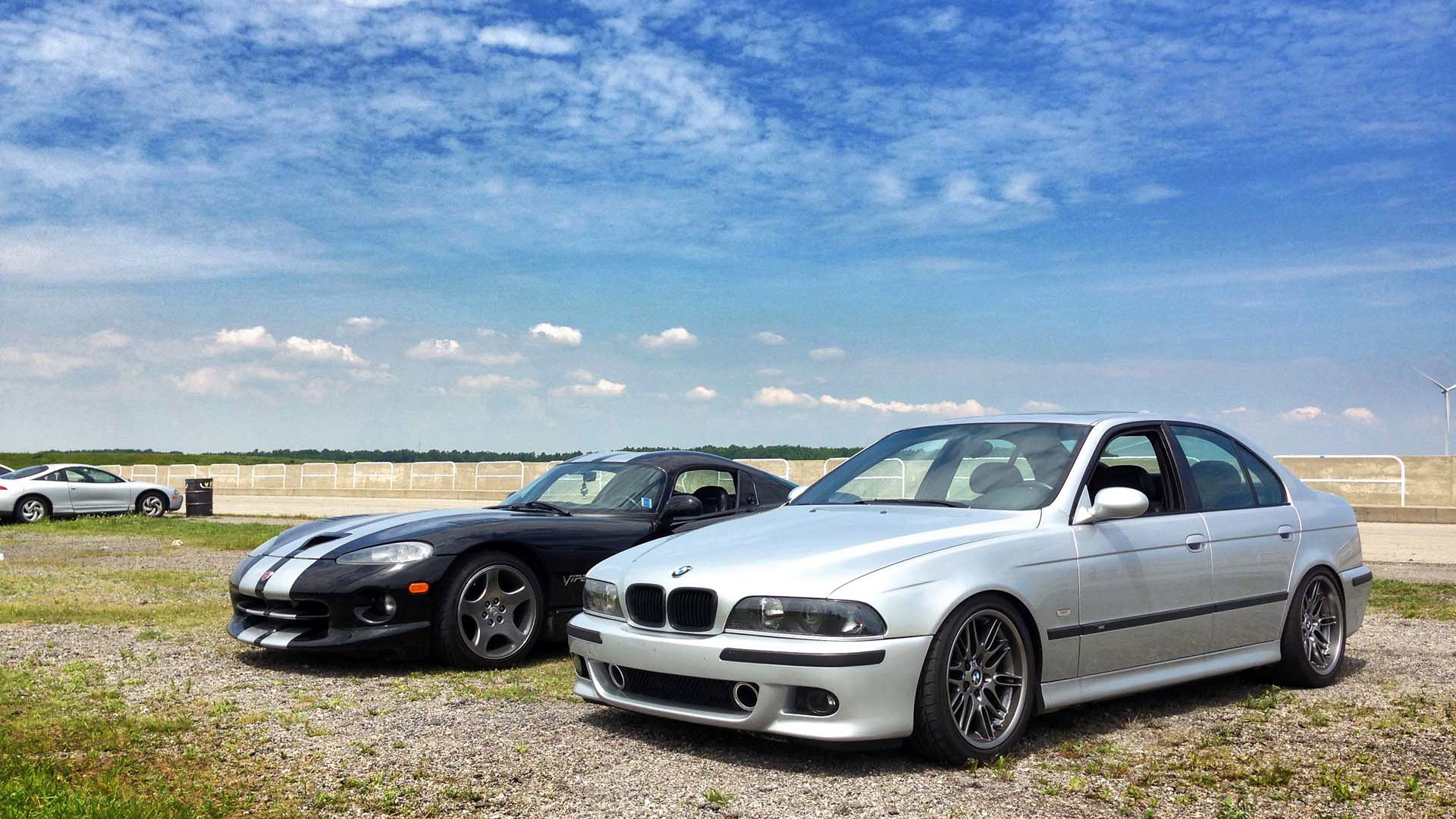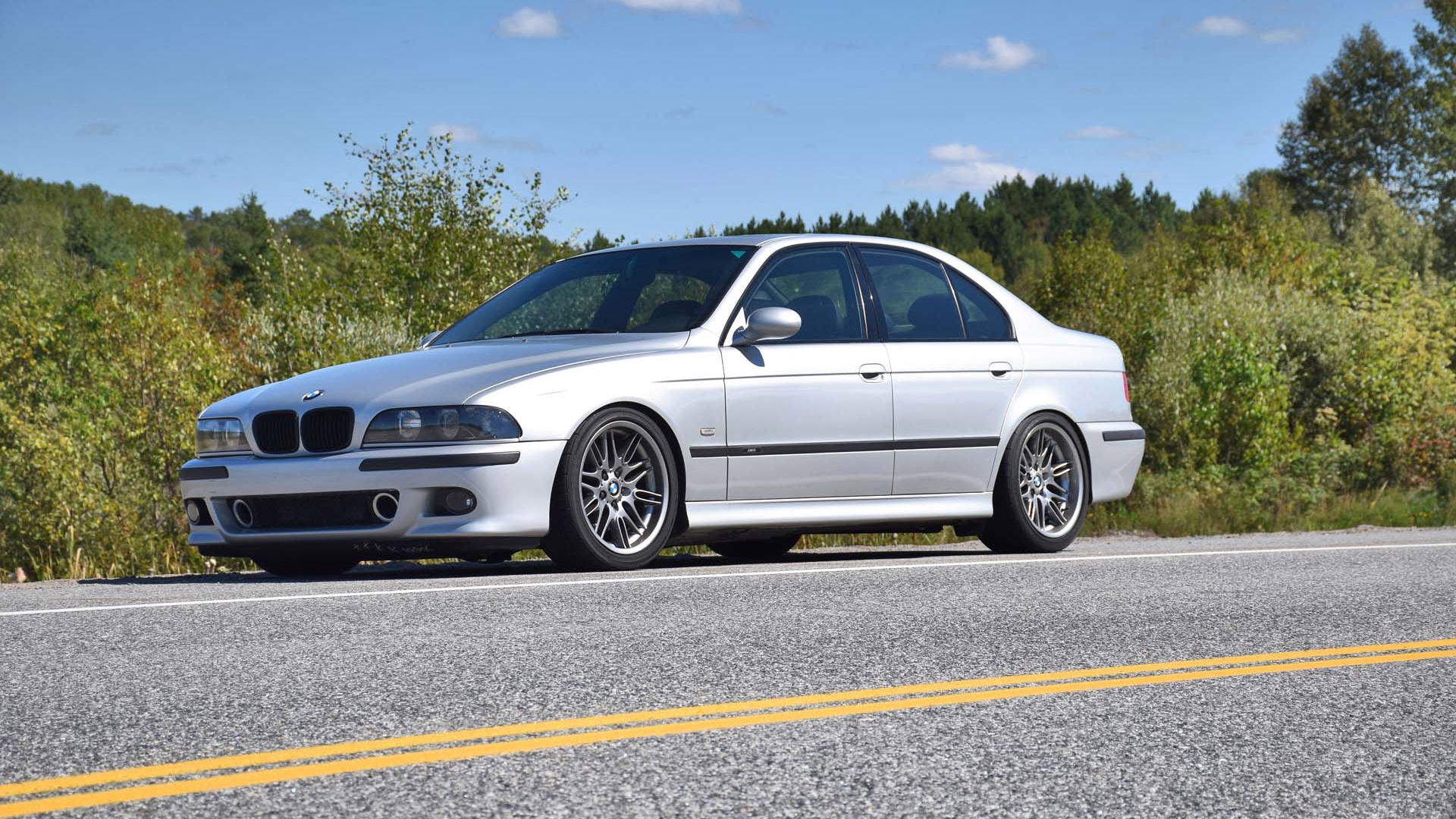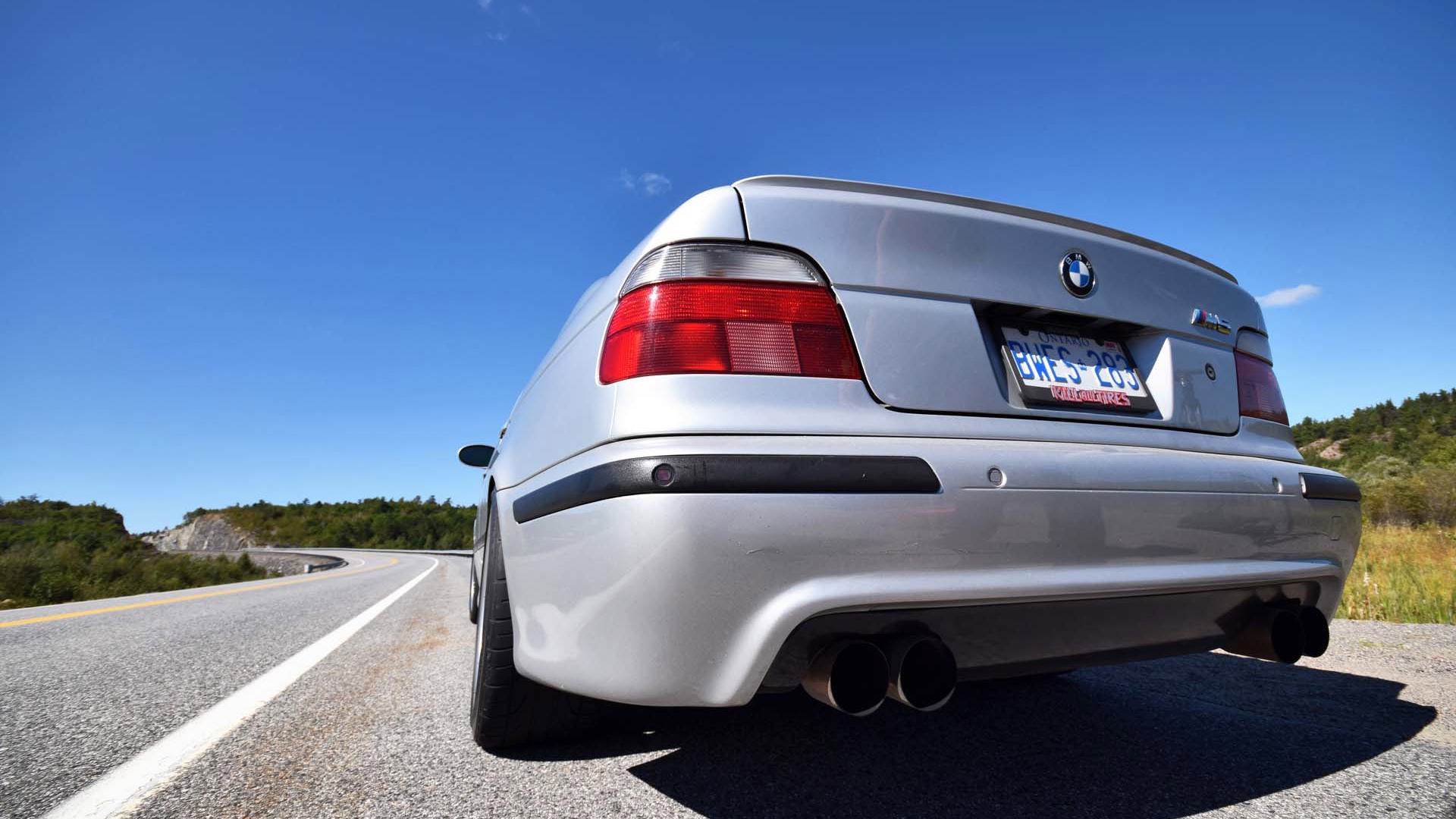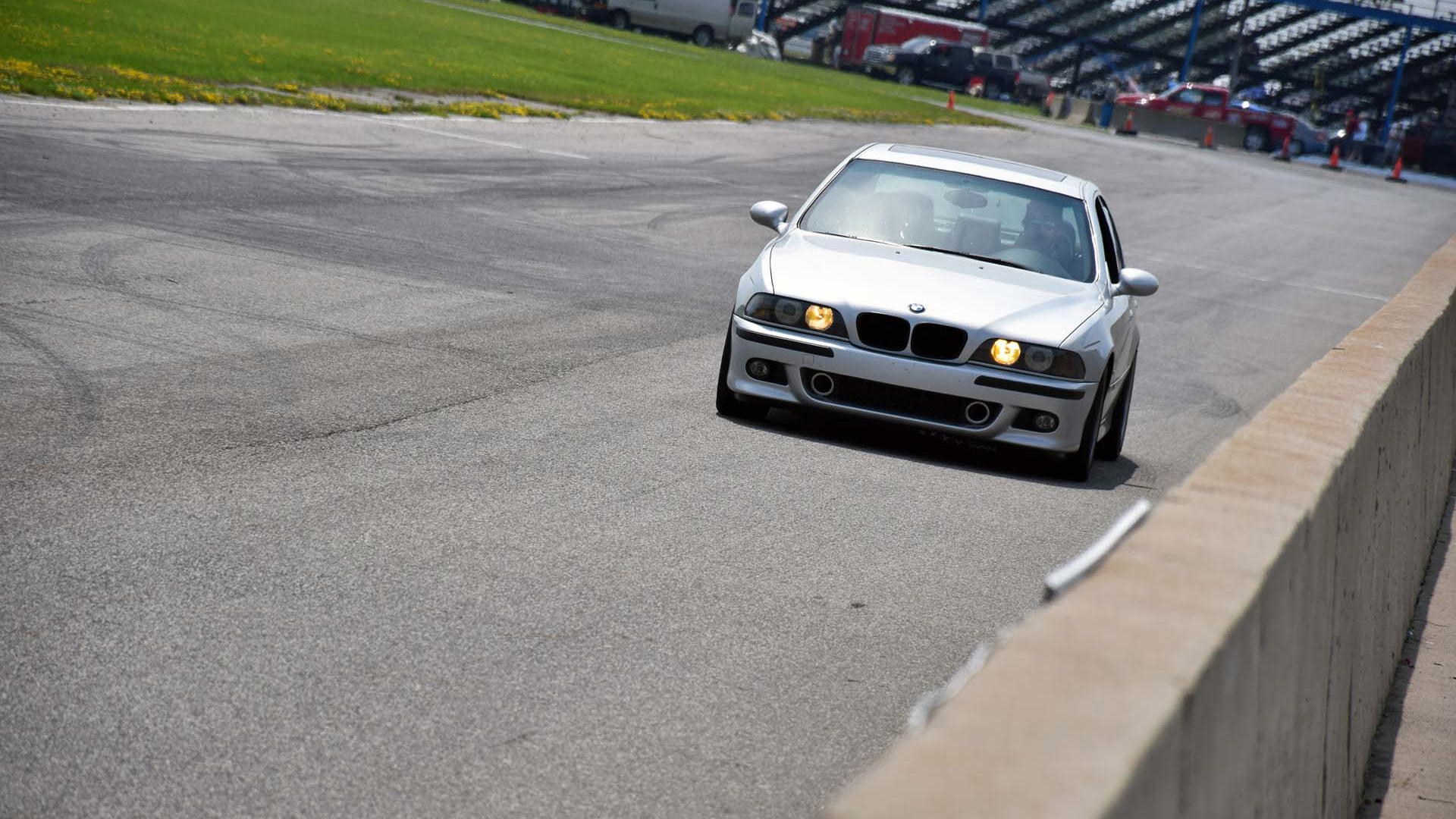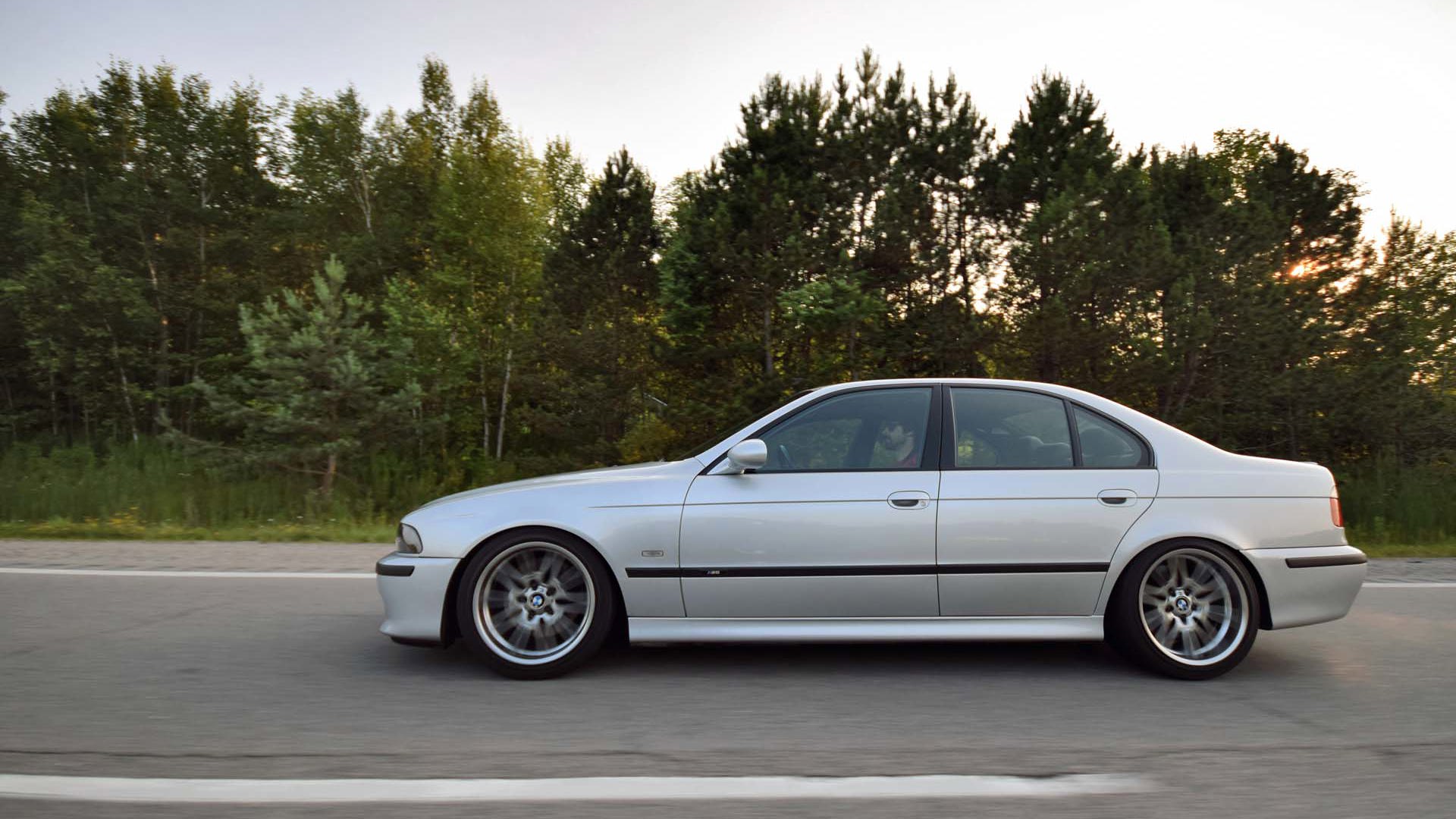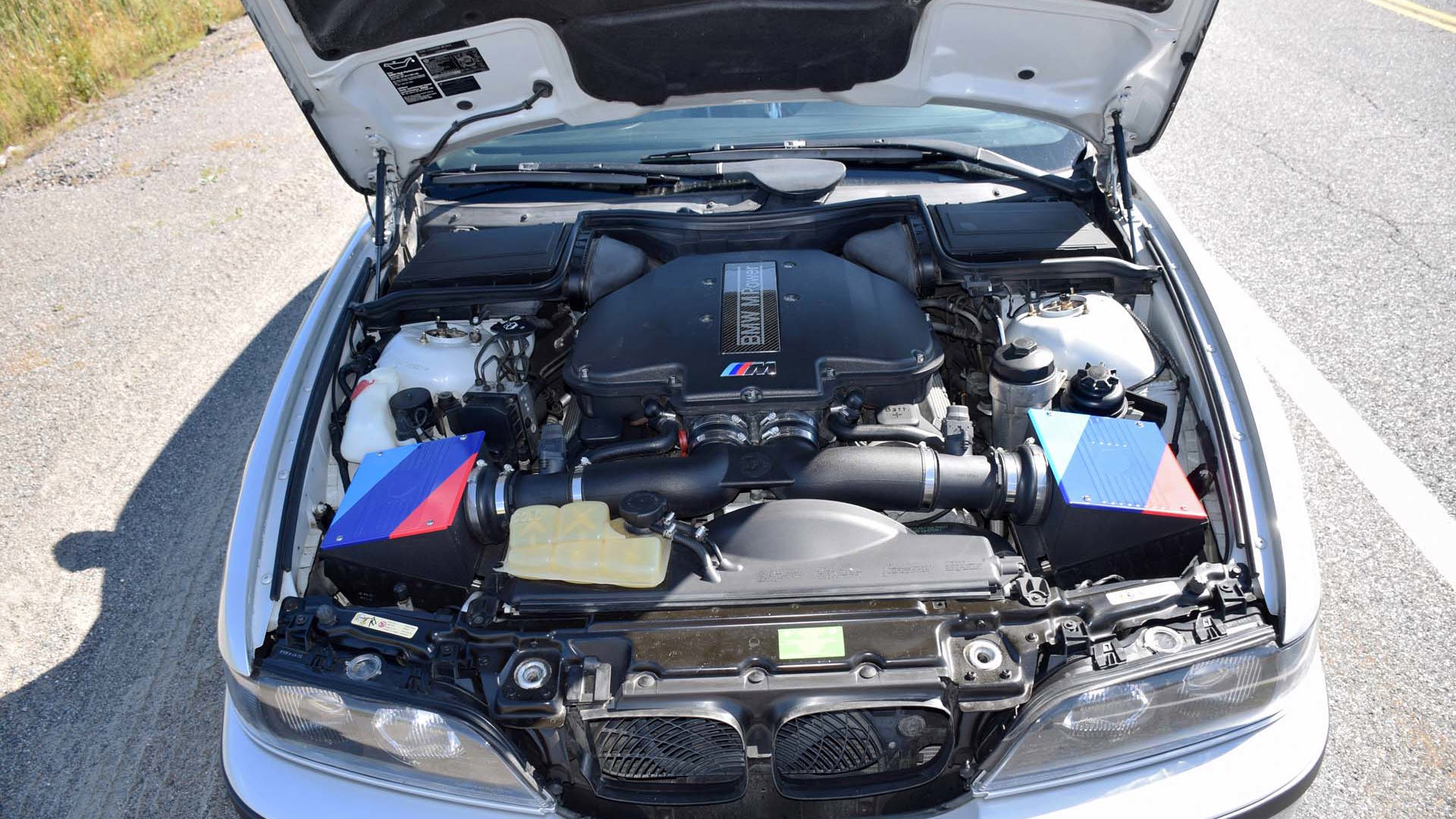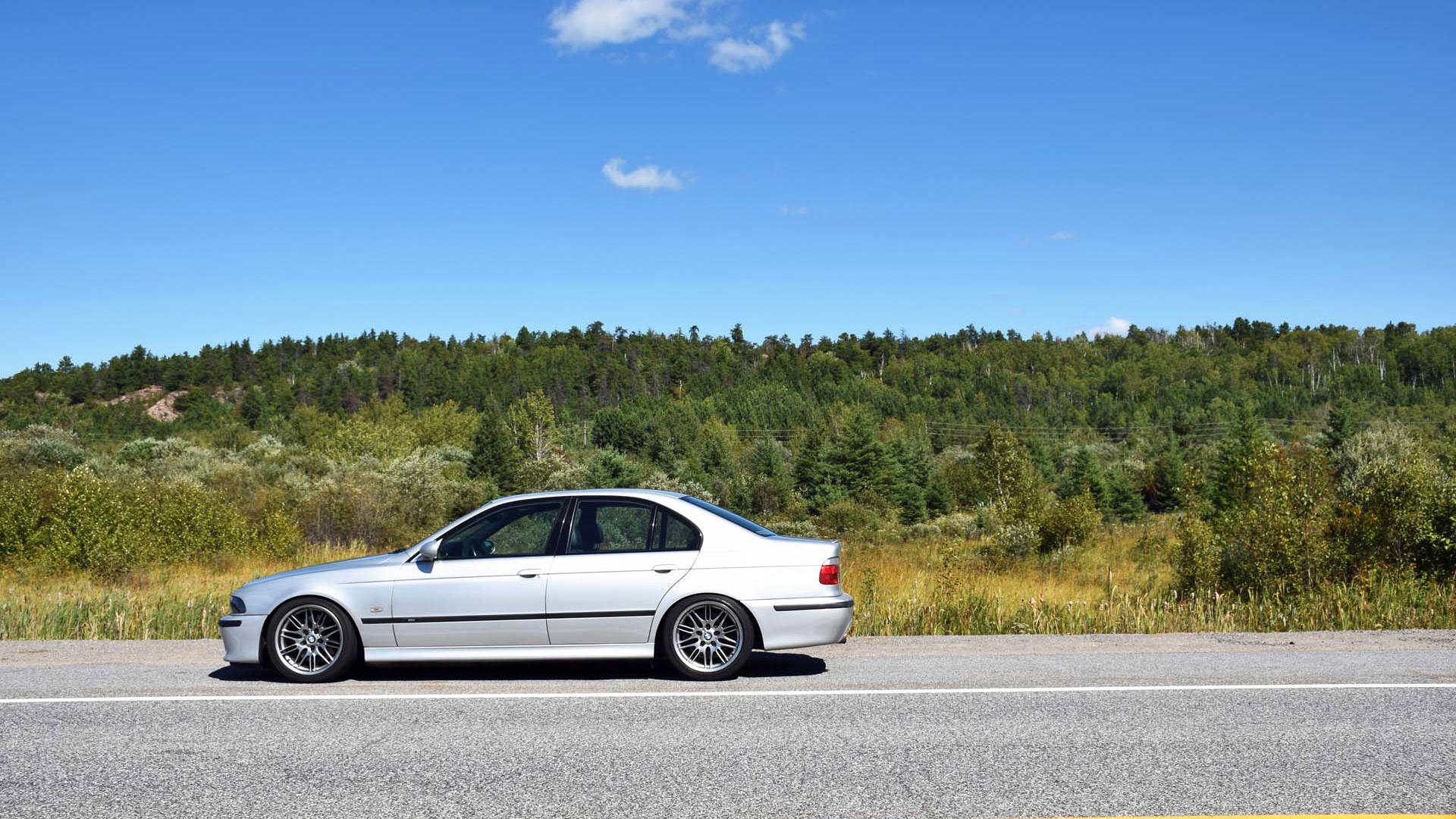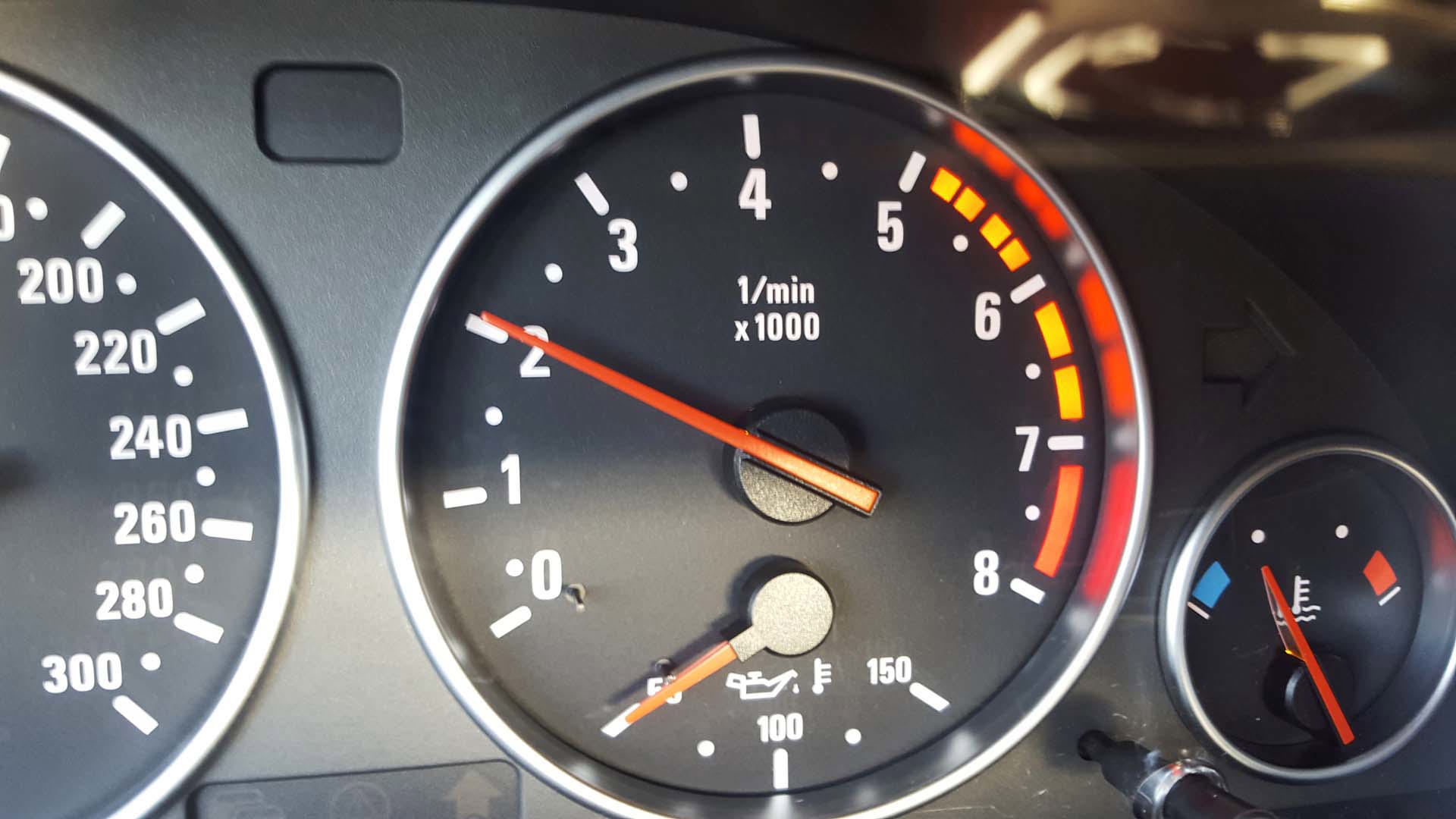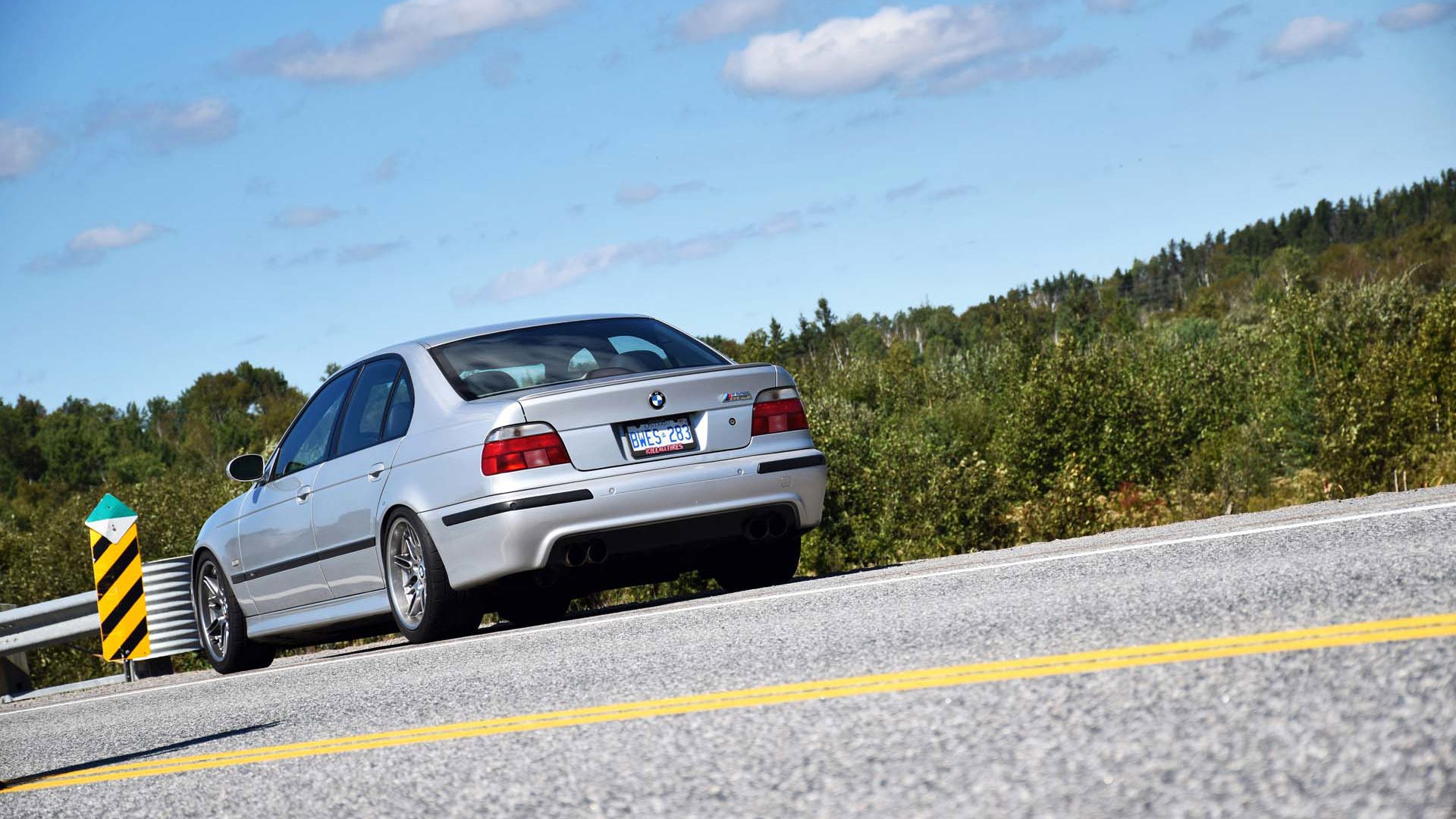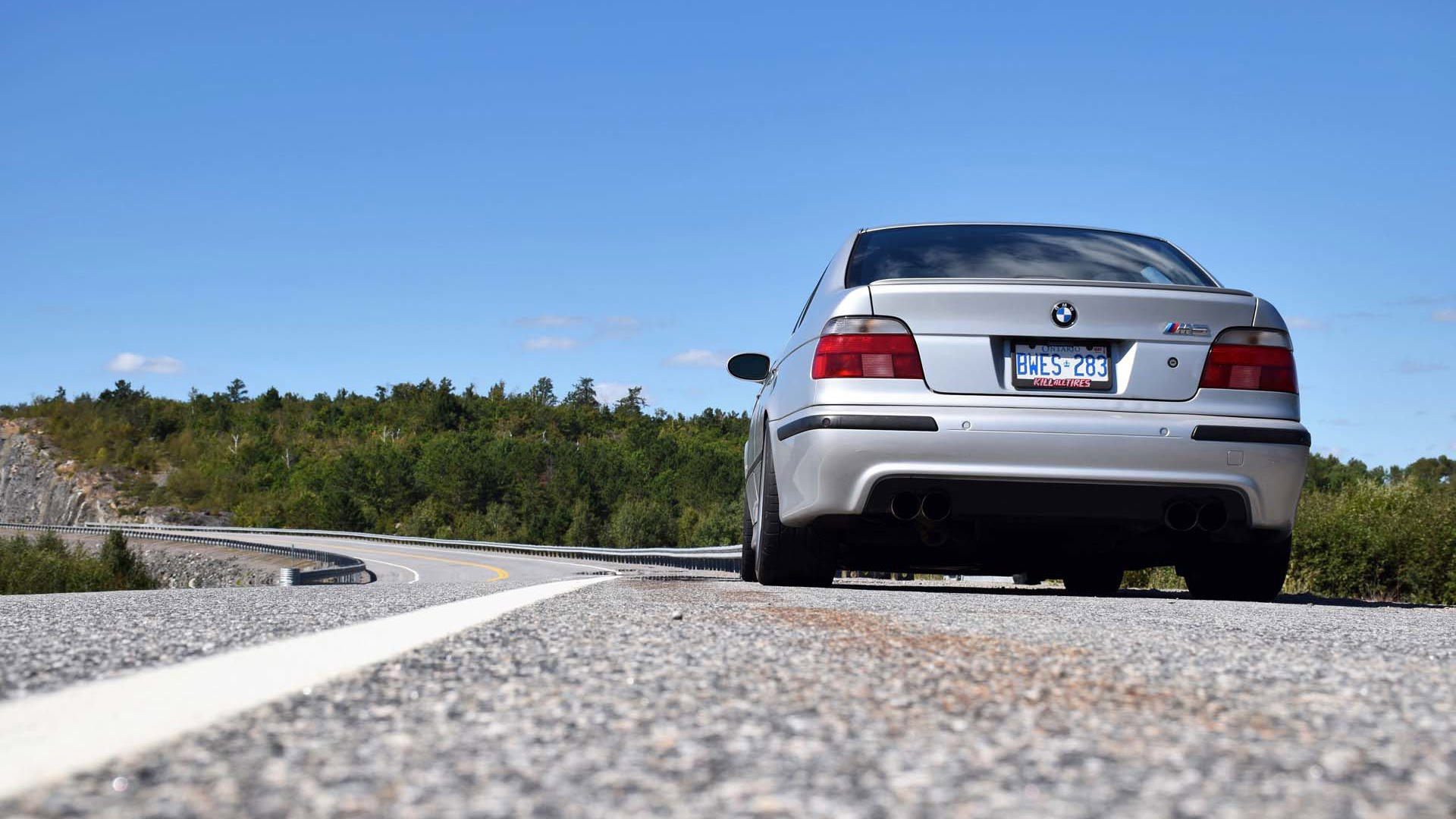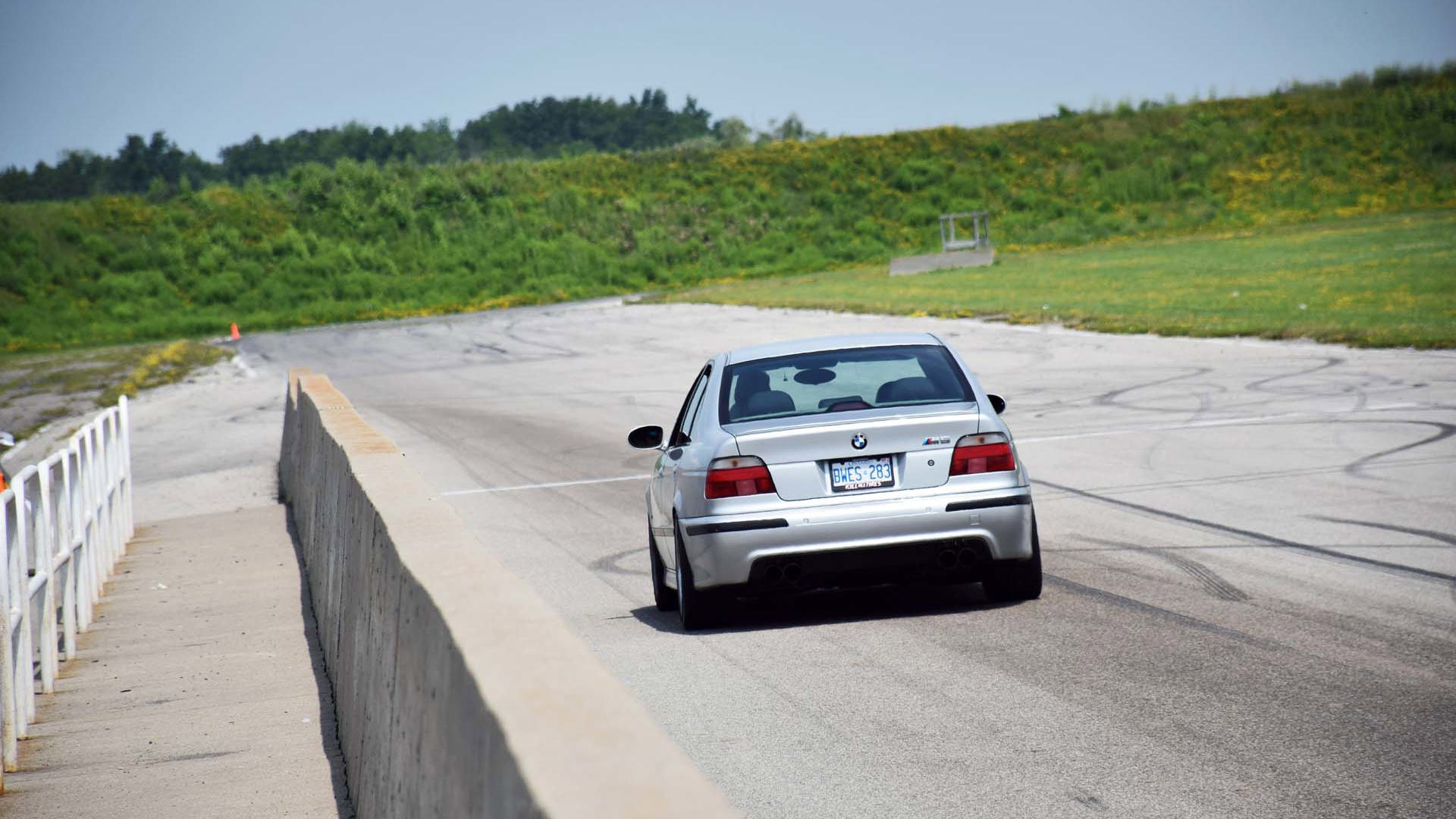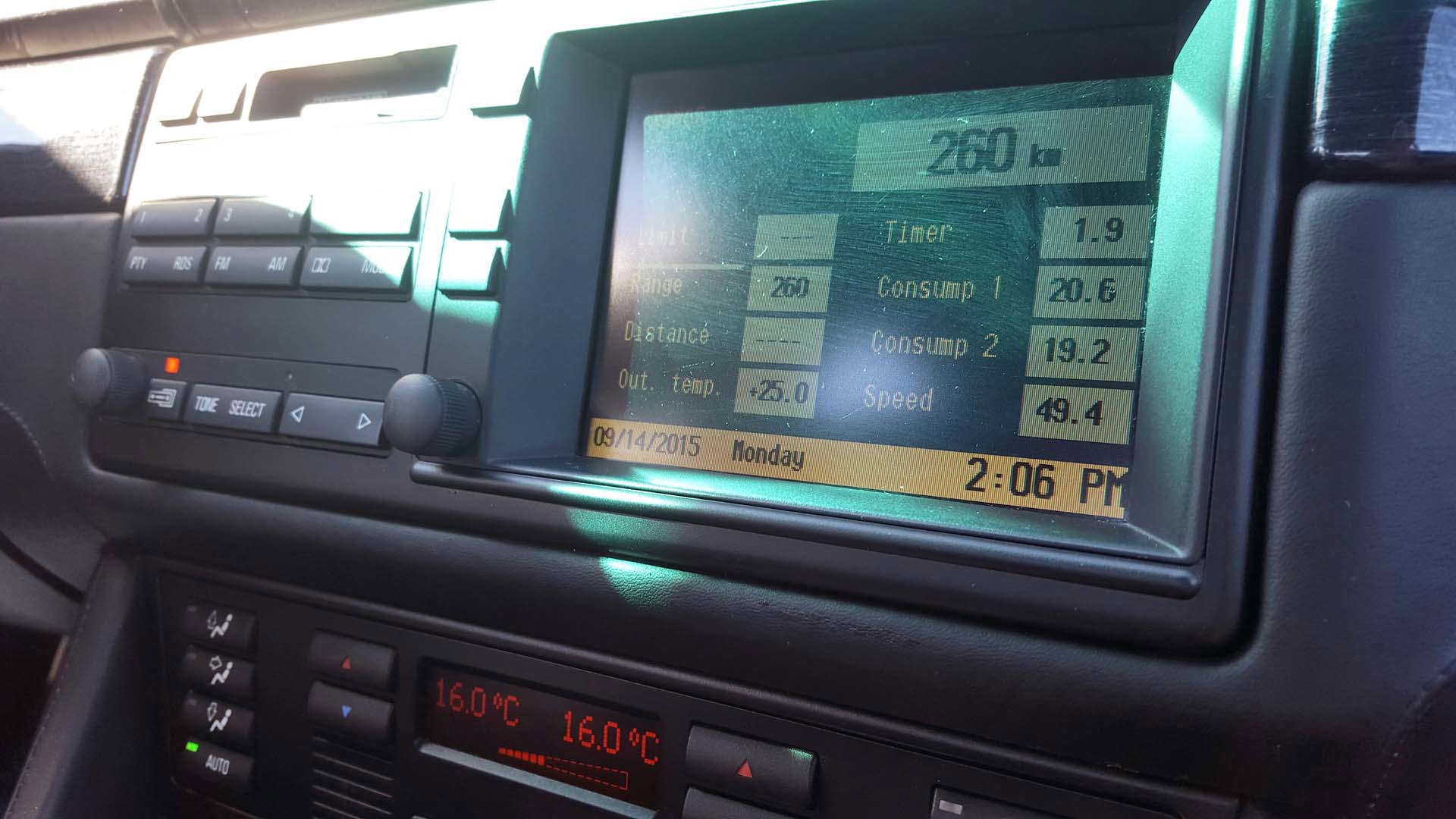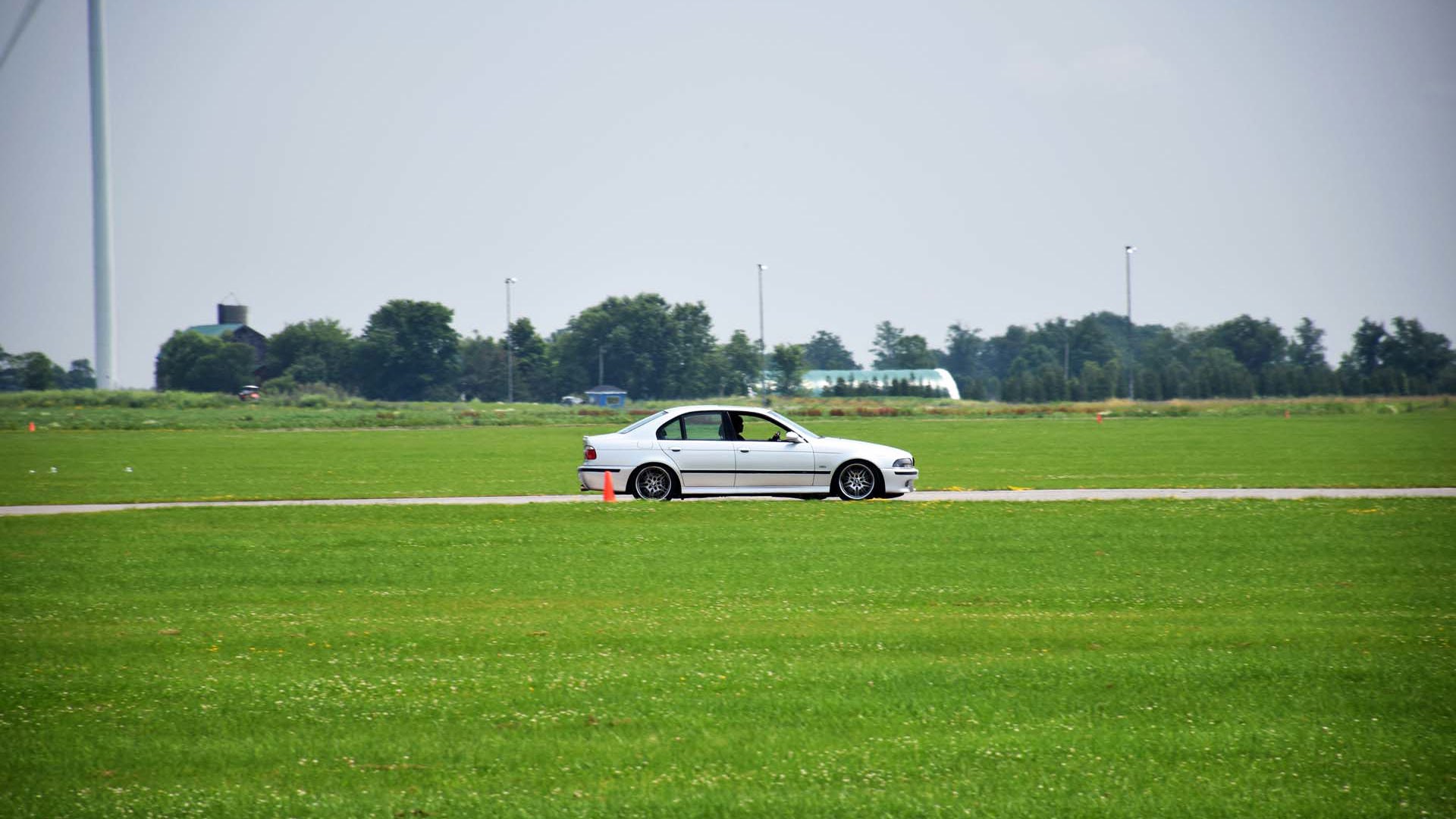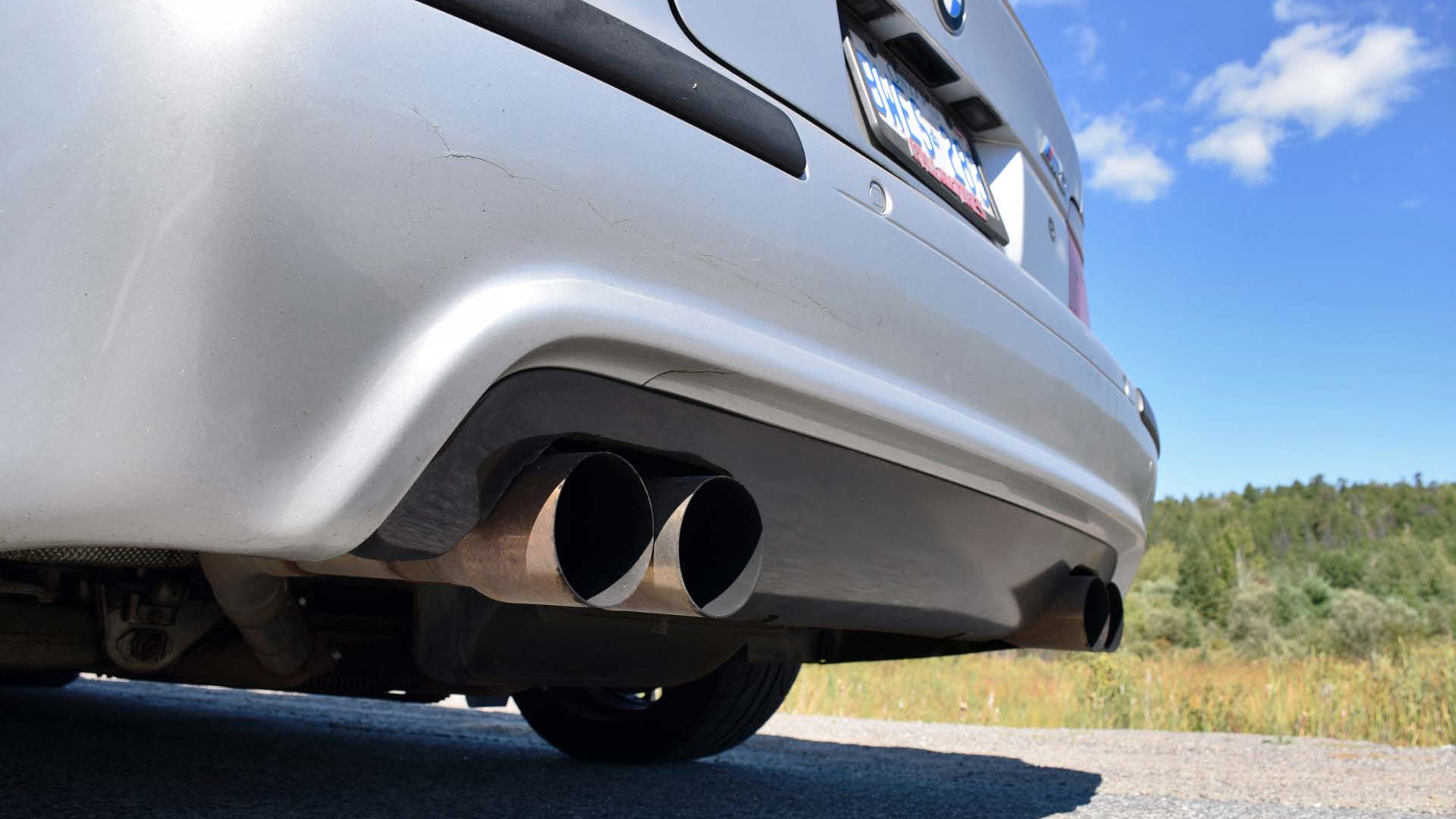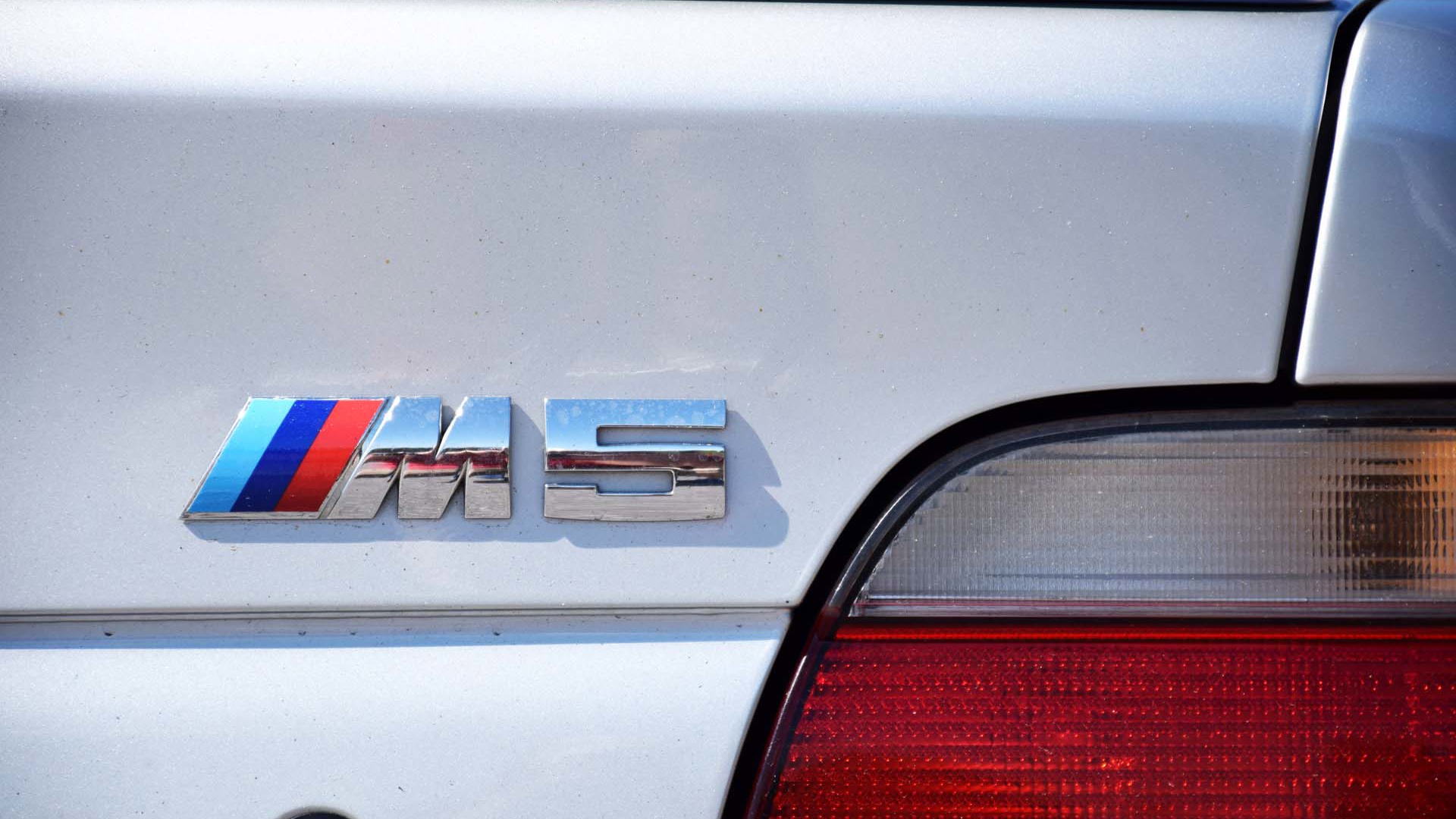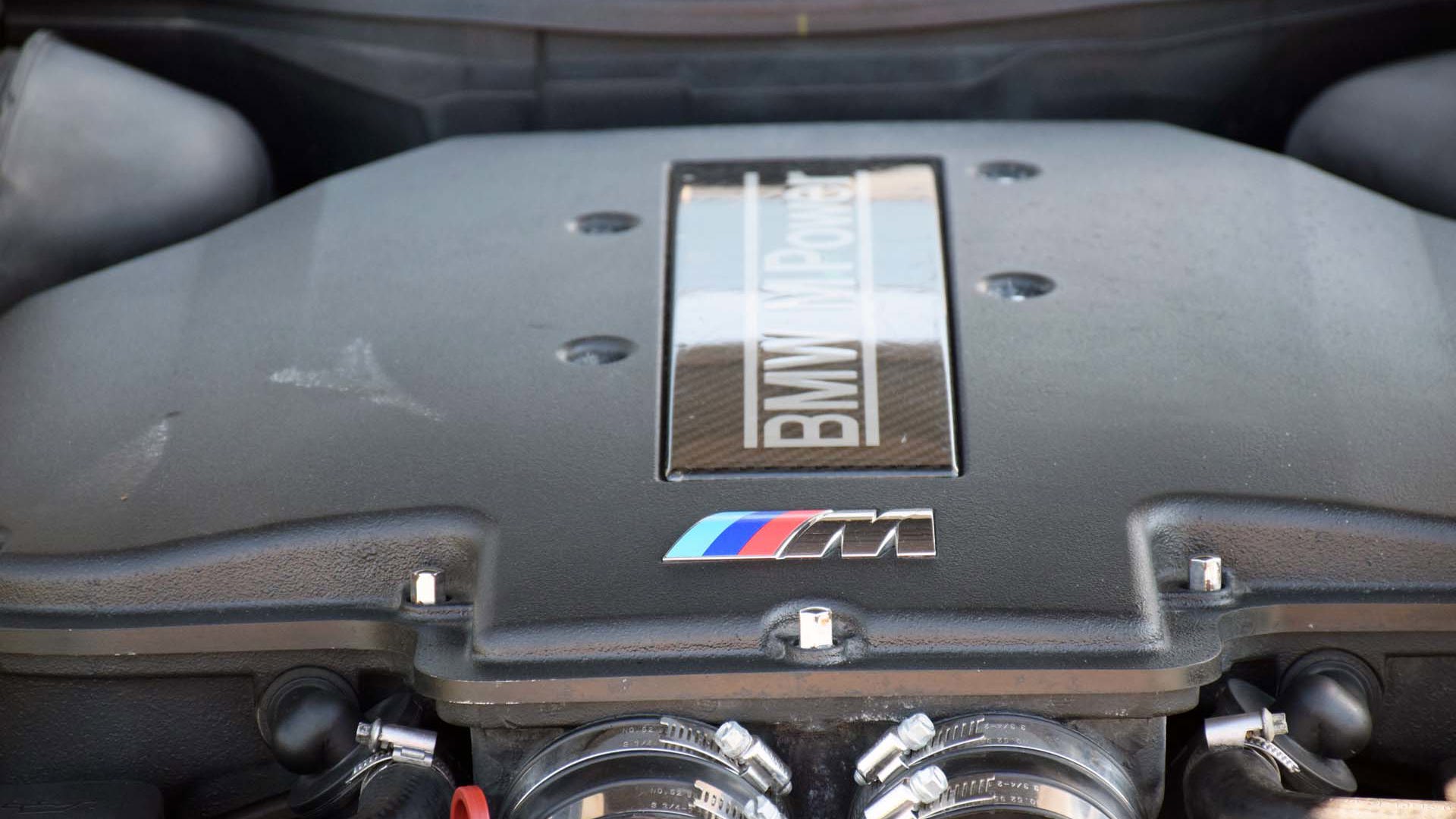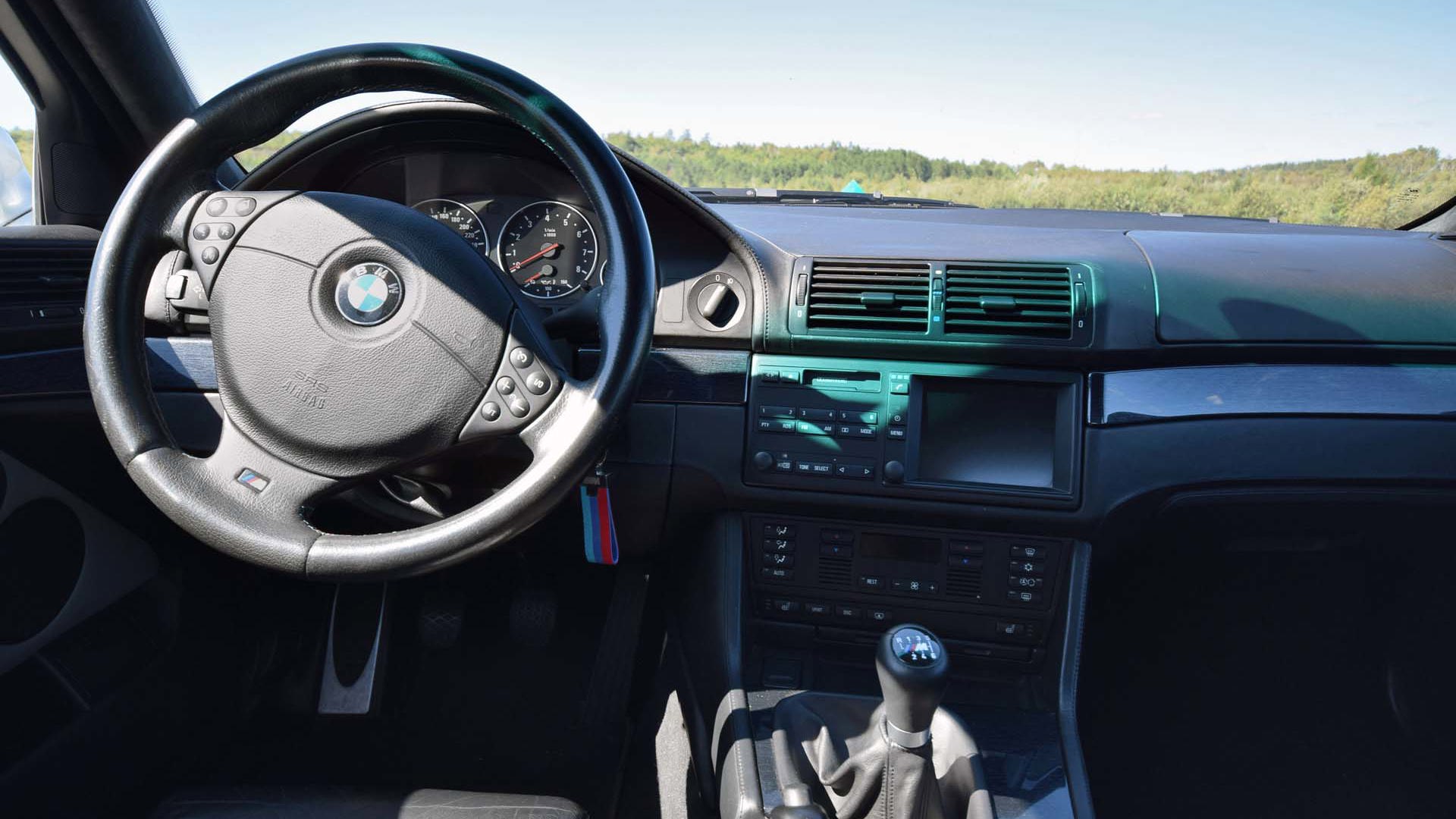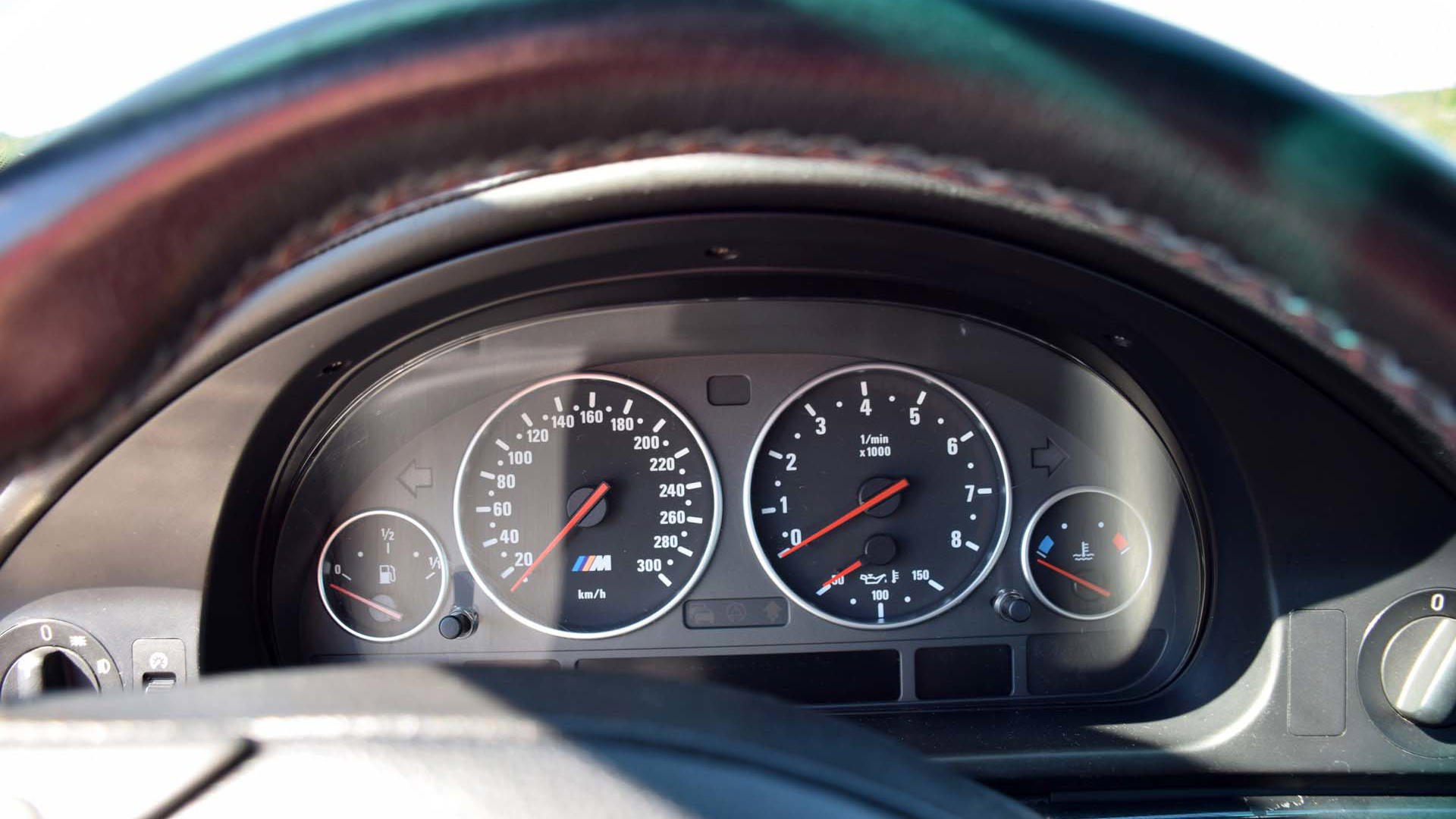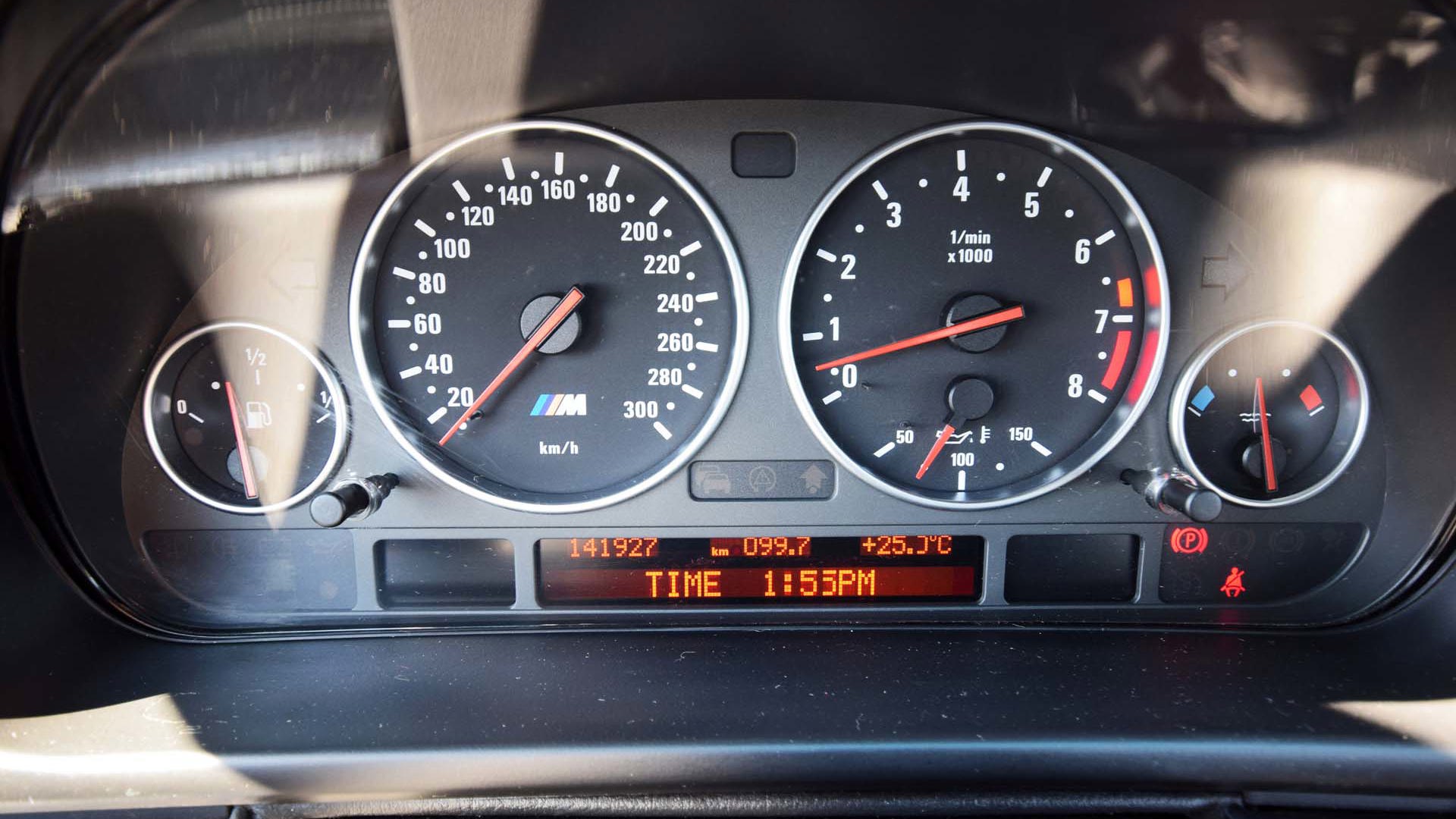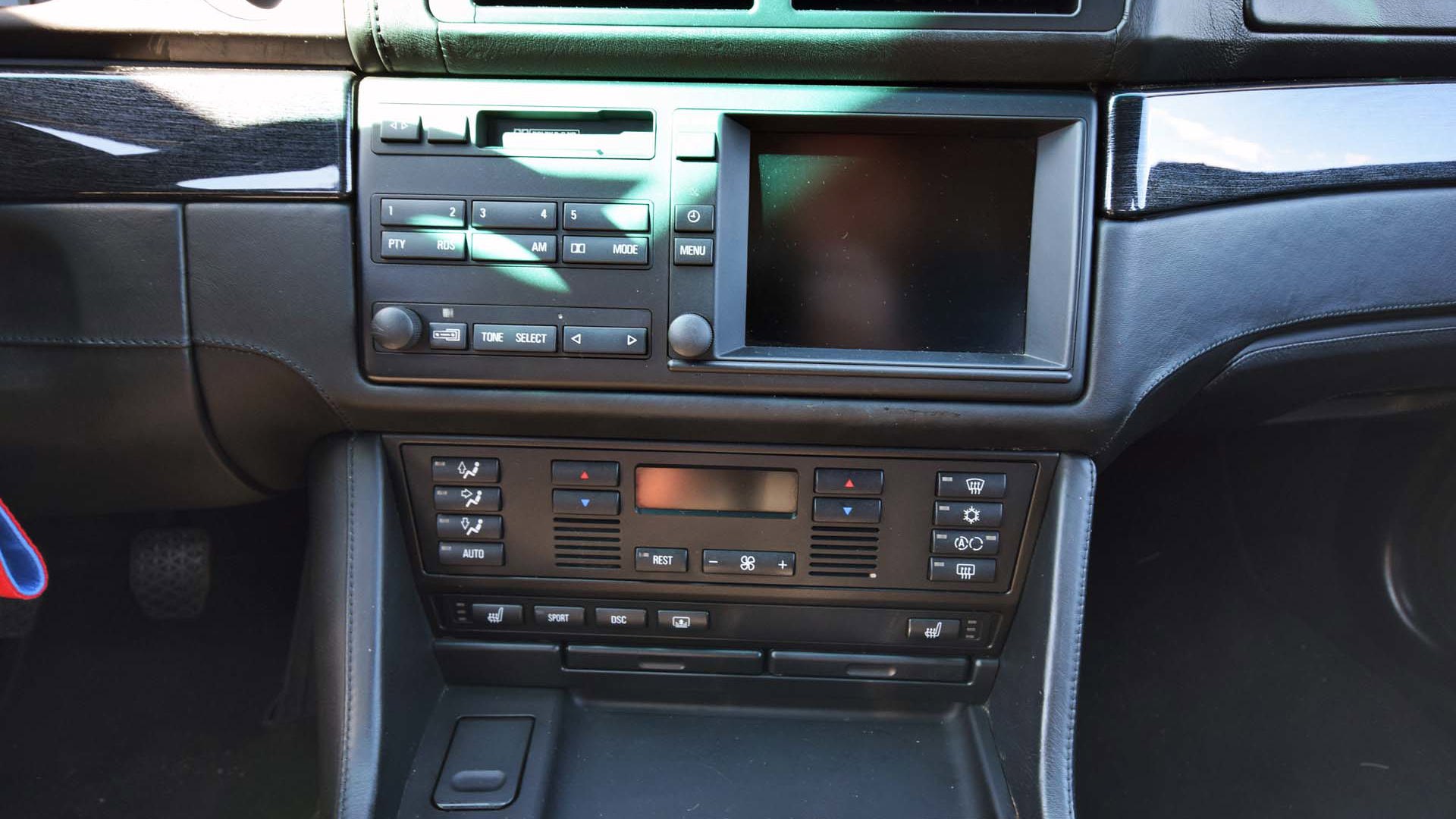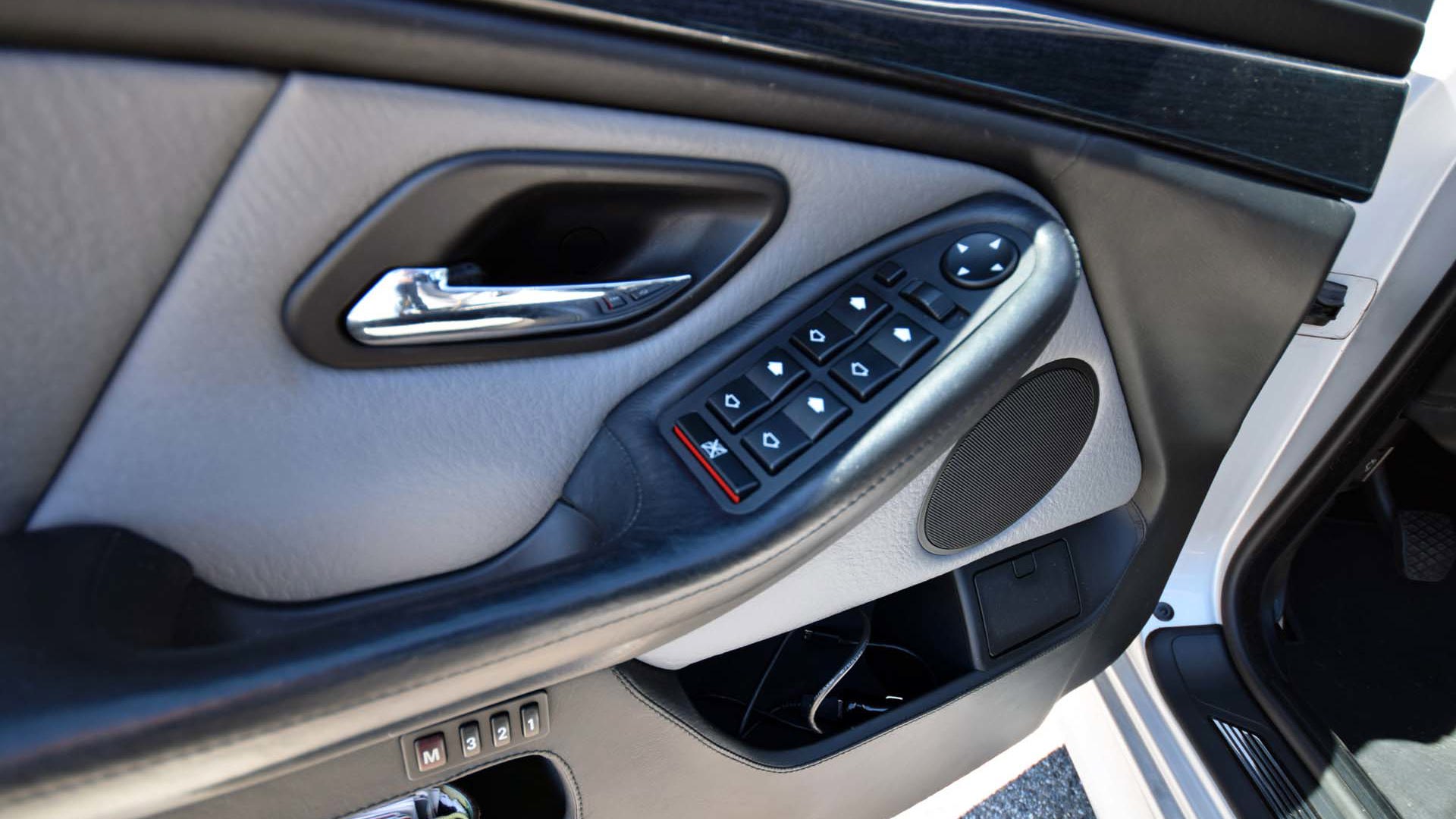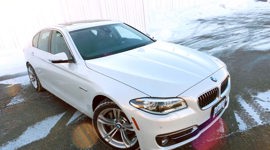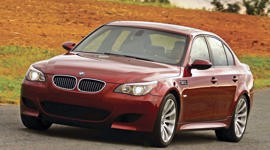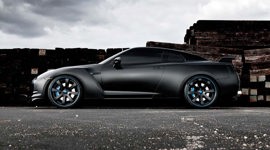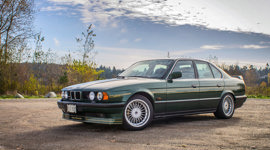It was a close second.
When it was time to park a poster-ride from my childhood dream-car collection in my garage for real-lifesies, the E39 BMW M5 was an impossibly close runner-up to the 2000 Dodge Viper GTS that ultimately made my cut.
A four-door, family-ready rocket-Bimmer that could keep up with Corvettes and 911s of its day? What’s not to like?
Like the Viper, I lusted after this machine as a kid. I imagined driving it to high school. I drew pictures of it in class. I even imitated its engine noises in the shower. Acoustics, and all that.
My friend Dave, a die-hard GM guy and owner of a sleeper Pontiac Sunfire that spits flames and does an 11-second quarter mile, texts me one night last year.
“DUDE CHECK OUT THIS M5 I FOUND ON TRADER!!!!!!!!!”
The link was to a 2000 model for sale. With the famous shadow-wheel design. And the mandatory silver-grey paint. This was exactly my second-place-by-a-sliver dream car. About 130,000 clicks. Fifteen grand.
Dave was never into German cars. He said they spat oil, caught fire, and had too many computers and modules that were all fancy. I asked him why he was even looking at a rare-ish 15-year old BMW. As a non-aficionado, his logic was simple.
“Bro, it’s got 400 horses, rear-drive, looks boss, and it’s in my price range.”
Fair enough.
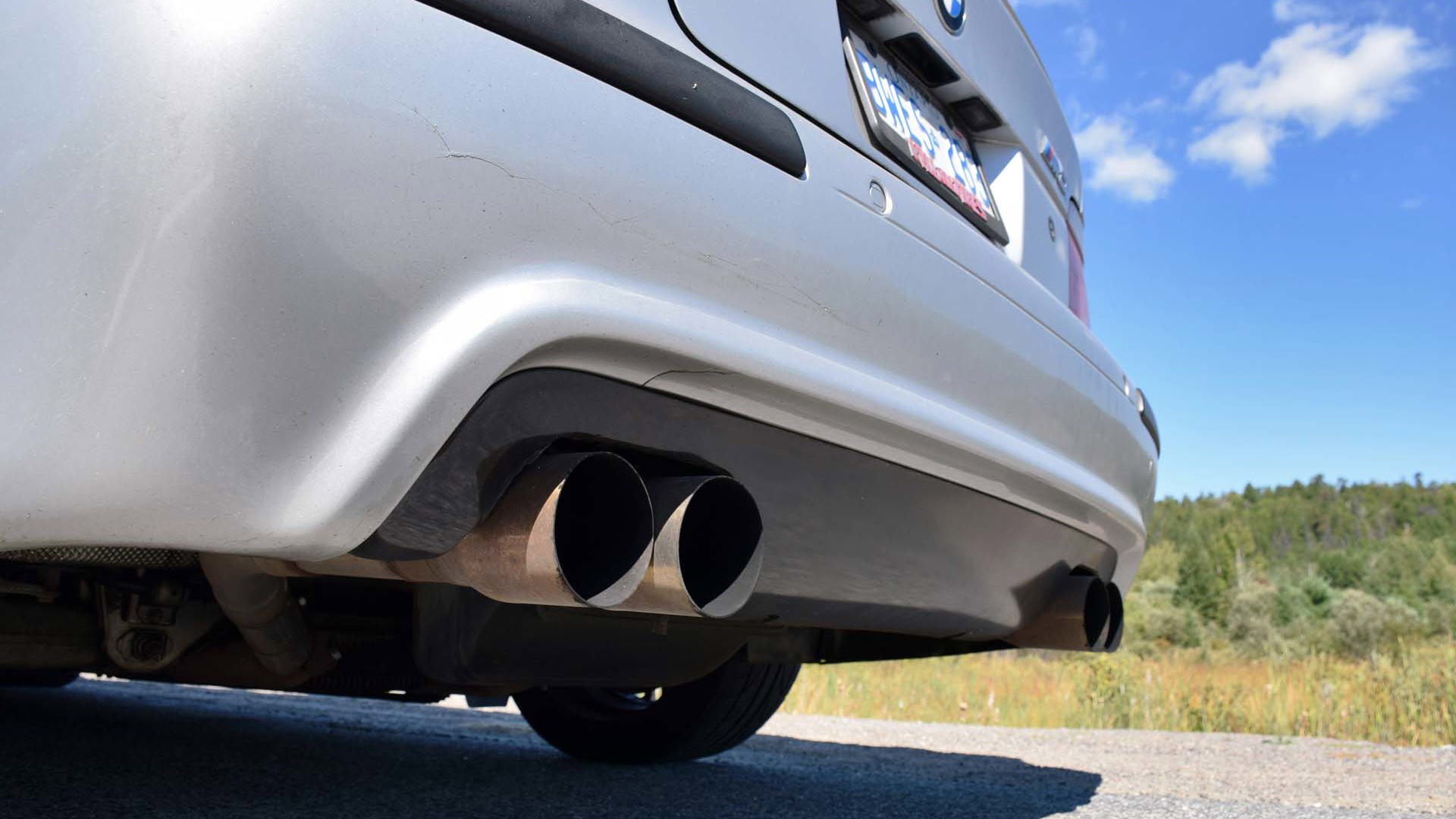
Dave’s new M5, of which I was secretly very jealous, came home in mid-winter. Dave installed snow tires, fixed about $1,200 worth of cam position sensors (and changed the clutch while he was in there, since accessing those $300-apiece sensors requires dropping the transmission), removed the mufflers, lowered the car slightly, installed some wheel spacers, and washed the engine bay. That’s it. This car was to be a classy, powerful, 365-day-a-year daily driver.
A few surprises surfaced on various stints at the wheel, when we traded our future classic rides for a day here and there.
First? Factory M5 exhaust is too quiet. I’d griped that the current-generation M5 was too quiet too, but this seems to be a recurring theme. The sound is good, but there’s way too little of it. Yank the mufflers and install some knock-off quad tips, and problem solved. Now, the M5 vacates the premises with a velvety, throbbing, exotic howl in its wake, leaving a grin on the face of anyone nearby with testosterone in their blood, and ears on either side of their head.
Second? BMW fanboys will send hired goons with baseball bats to visit me for saying this, but I don’t like the steering. When you really drive the bejesus out of the E39, it feels fine – you can actually feel the front end loading up with the M5’s weight, and the ratio is only a touch lazier than I figure would be perfect given the rest of the machine’s calibrations. But around town, or on the highway, there’s a needlessly heavy, sludgy feel to the first 30 degrees of steering or so, in either direction off centre. For the first third of these degrees, the car doesn’t even react to inputs, and the steering feels limp, like an old truck. Mind you, wheel spacers and suspension lowering may play into it, and Dave tells me the M5 uses a steering box, à la pickup truck, which probably doesn’t help.
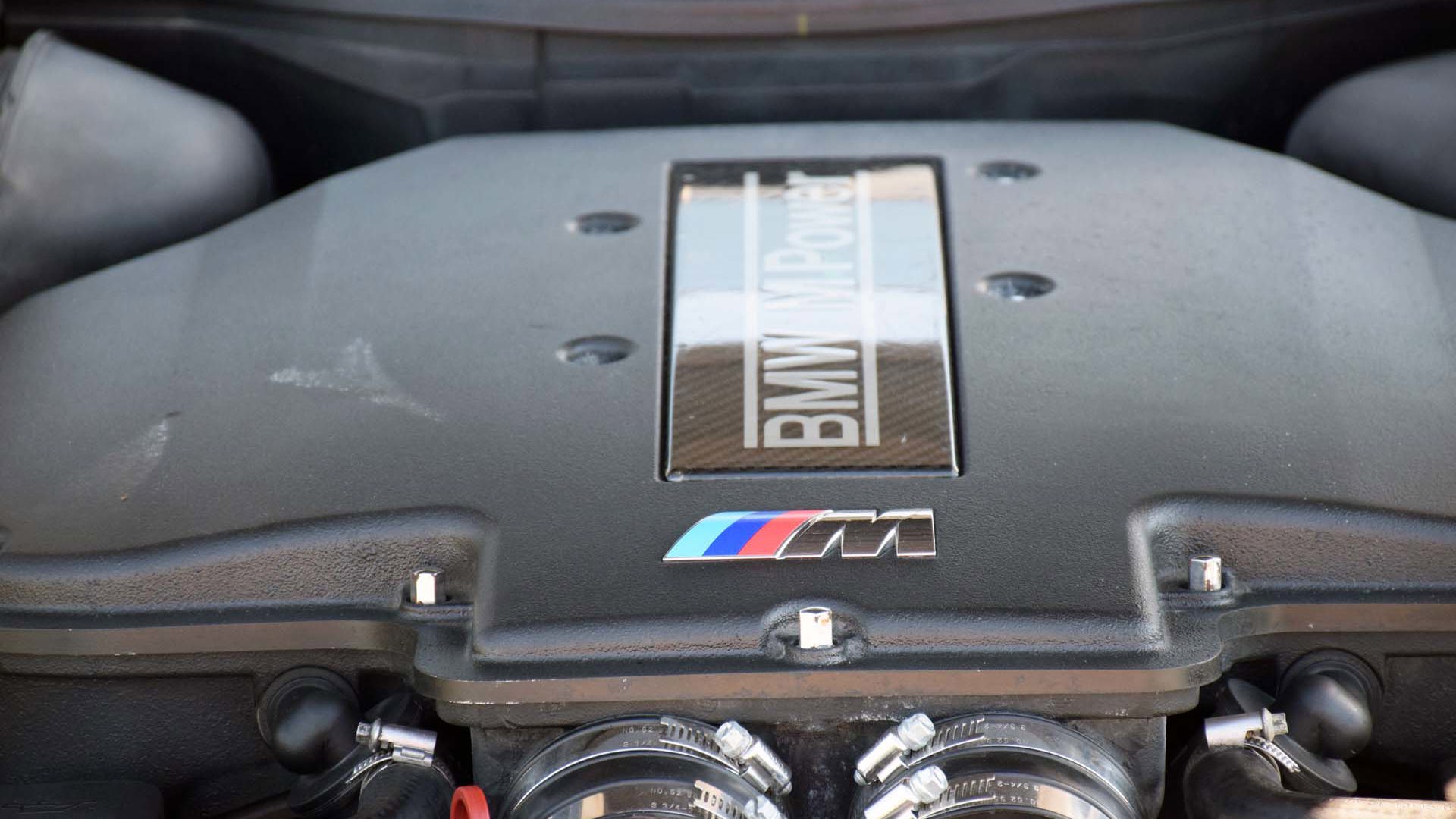
Third surprise? The engine. Back then, a trick variable cam timing system called VANOS enabled both low-end torque and free-breathing horsepower, delivered en route to a redline at the better part of 7,000 revs. But the way the engine pulls it off stands up, even by today’s standards. The all-motor 5.0L unit feels a bit lumpy at lower revs, but smooths right out as the tachometer cranks clockwise, sound and thrust building, and building some more. Every throttle-poke is met by an instant push into your seat, and it’s a provocative power curve that’s responsive and thrilling on a level that could teach a few modern-day V8 engines a thing or two.
Click the “SPORT” button, and a sharper throttle setup puts that howling redline even closer to striking distance, and makes the M5 even friskier in traffic. And, like even the newest BMWs, the engine seems to operate from behind a creamy layer of smoothness.
We went lapping. I took the Viper. Dave brought the M5. Things were realized.
Put simply, running numerous hot laps in a Viper GTS requires absolute concentration and results in frequent and vigorous wincing, and tensing of various sphincters. When you’re finished some laps and still alive, you feel like you just got finished fighting a rabid elephant that recently downed a case of Viagra. Plus, you’re sweaty, and you smell like exhaust, which isn’t classy.
In the M5, there’s a… naturalness to it. Refinement. Athleticism. You never get the sense that you’re working the thing hard, that it’s ever at risk of leaving its comfort zone, or that you’re bothering it. The Viper driver exits the car sweaty, frazzled, wide-eyed, staggering, and ready for a nap. The M5 driver could get out in a business suit, with a briefcase in one hand and a coffee in the other, fresh and smiling. One’s a natural performer that’s flattering and supportive. The other, a tremendously entertaining, if primitive, rocket thruster with wheels and a seat.
And the handling.
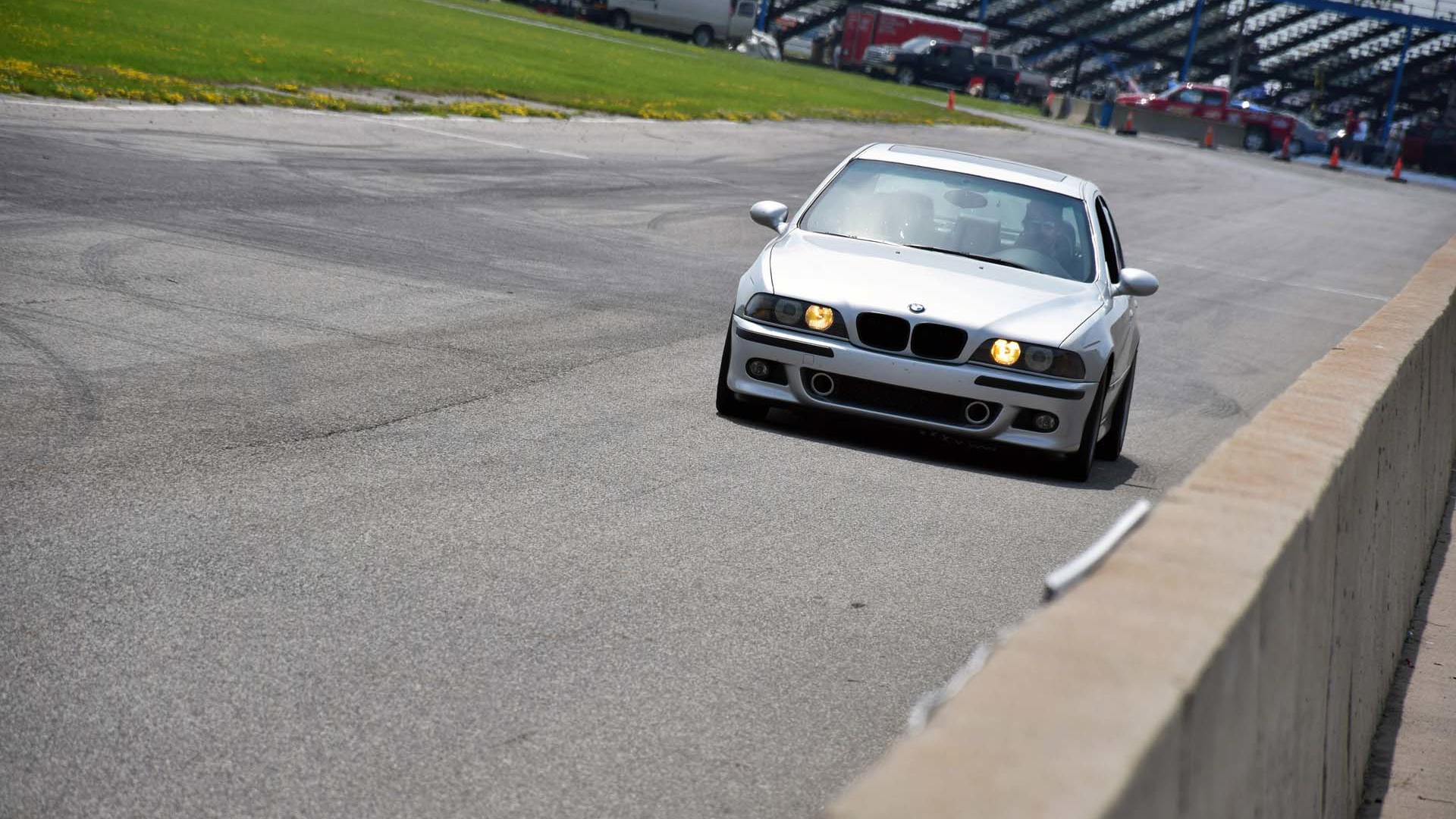
Apparently, nobody told the E39 it wasn’t a light little sports coupe. You feel tremendous fine-tuning, honing and calibration of each system off of the rest: steering eagerness is just right for the M5’s weight, the amount of grip is just right for the power output, the suspension feels dialed right in to make use of it all. No dynamic attribute overwhelms any other, it is as balanced as balanced can be, and that helps make it a beautiful driver’s car.
Interestingly, even at 15 years old, the traction control system is remarkable. Dave’s a track-day novice, so he left it on to prevent surprise visits to the cabbage. Engaged, the system arrests wheelspin before you even feel it, and does so with more smoothness than some new vehicles. You feel the engine’s power cutting, aggressively but smoothly, and without any sensation of brake scrubbing. It’s adjusting the car, not shutting it down, though it leaves the steering wheel as the only means of turning the car.
Turn the traction control system off (one click, no BS), and you can get the throttle involved, big time. Just a squeeze, correctly timed, here and there, sees the M5 slither and squirm beneath you, lightly and gently, and without undue noise, harshness, or even much of a sensation of any wheelspin at all. Simply, it feels eager to please. Light. Agile. Taut. Steer with the wheel, the throttle or both, and it plays ball, never intimidates, and never feels out of its zone. The way the M5 stays active, slippery and lively beneath you really helps prove why it has such a prized reputation as one of the best driver’s cars of all time.
And, when you’re gifted with an open-straight stretch and a wave-by from the guy in front of you, what better way to thank the gods of speed and power than with a triumphant blast of the gorgeous exhaust?
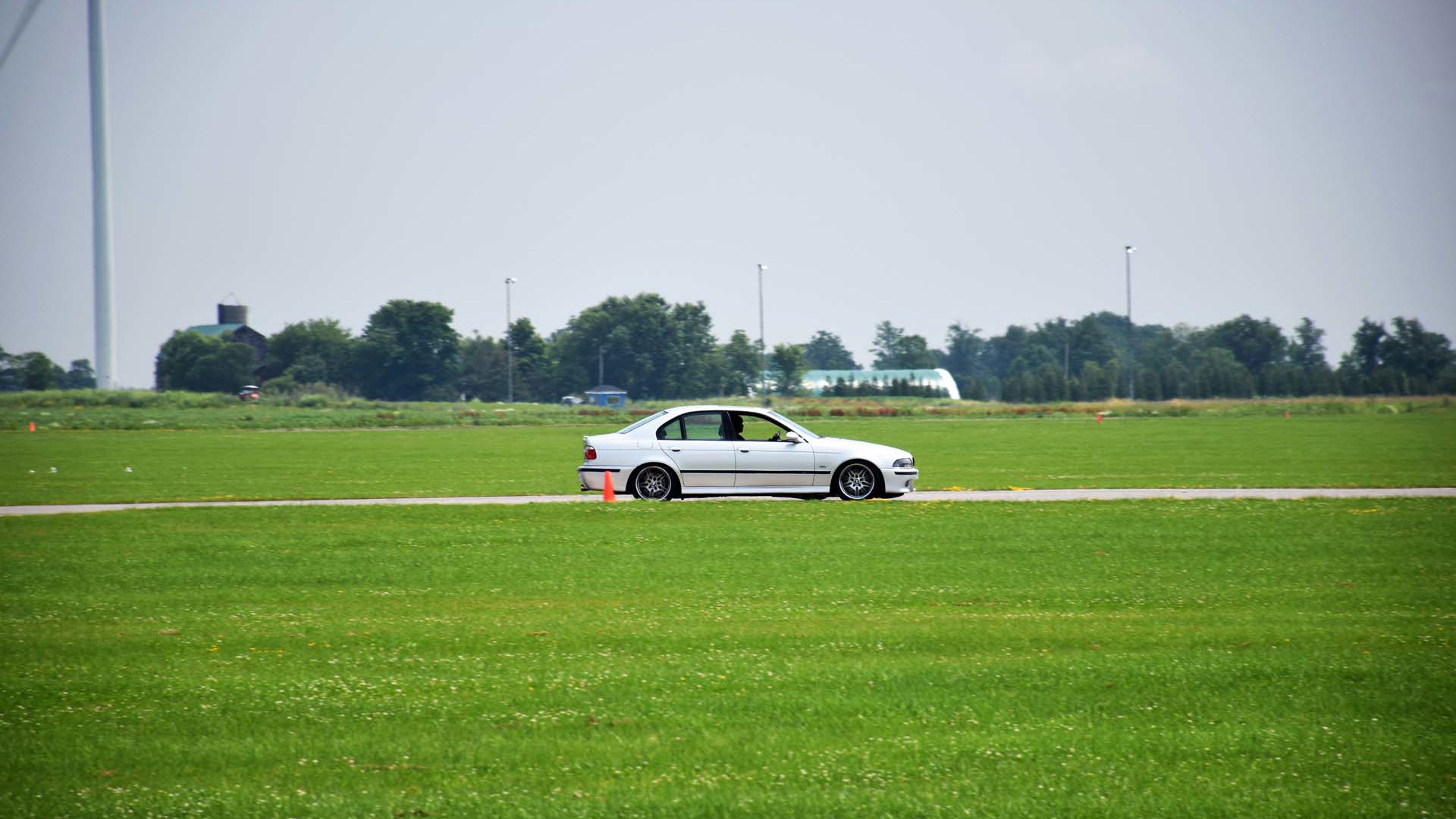
Then, you just drive it home. Cruising, the opened-up exhaust, sans mufflers, is surprisingly quiet. You almost appreciate the syrupy on-centre feel of the steering since you’re not always correcting the M5’s position in its lane. It rides comfortably. The soothing smell of high-end leather and suede invades your nostrils, and there’s room to stretch out and relax and unwind.
In the Viper, it’s still all noise, rattles and exhaust fumes, which made your writer particularly aware of the M5’s split personality. It can turn off its performance personality whenever you lighten up on the throttle and click sport mode off. The Viper can’t.
I’ve still got no regrets, though I get first dibs if Dave ever sells this M5 for a newer one. He says one day, he will.
